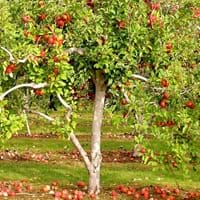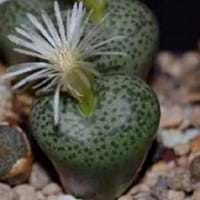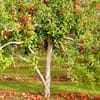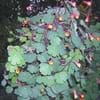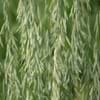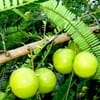Life Span
Perennial
Perennial
Type
Flowering Plants, Fruits, Trees
Cactus or Succulent
Origin
Central Asia
Southern Africa, South Africa
Types
Aceymac apple, Bailey Sweet apple, Dabinett apple, Nehou apple
Lithops karasmontana
Lithops pseudotruncatella
Lithops fulviceps
Habitat
Hillside
Barren waste areas, Desert, Dry areas
USDA Hardiness Zone
5-8
12-15
Sunset Zone
A1, A2, A3, 8, 9, 10, 11, 12, 13, 14, 15, 16, 17, 18, 19, 20, 21, 22, 23, 24
13, 14, 15, 16, 17, 18, 19, 20, 21, 22, 23, 24
Habit
Oval or Rounded
Rosette/Stemless
Flower Color
White
White, Yellow, Pink, Lavender
Flower Color Modifier
Not Available
Not Available
Fruit Color
Green, Red
Not Available
Leaf Color in Spring
Dark Green
Green, Blue Green
Leaf Color in Summer
Green
Green, Blue Green
Leaf Color in Fall
Brown, Green, Light Yellow
Green, Blue Green
Leaf Color in Winter
Not Available
Green, Blue Green
Leaf Shape
Oblong
Not Applicable
Plant Season
Spring
Spring, Summer, Fall, Winter
Sunlight
Full Sun, Partial shade
Full Sun, Partial Sun
Growth Rate
Medium
Very Slow
The pH of Soil
Neutral
Neutral
Soil Drainage
Well drained
Not Available
Bloom Time
Fall, Summer
Late Spring, Early Summer
Tolerances
Drought
Drought
Where to Plant?
Ground
Container, Ground, Pot
How to Plant?
Grafting, Seedlings, Transplanting
root cutting, Seedlings, Stem Cutting
Plant Maintenance
Medium
Medium
Watering Requirements
Medium
Does not require lot of watering, Drought Tolerant, Needs very little water
In Summer
Lots of watering
Lots of watering
In Spring
Moderate
Moderate
In Winter
Average Water
Average Water
Soil pH
Neutral
Not Available
Soil Type
Loamy
Not Available
Soil Drainage Capacity
Well drained
Not Available
Sun Exposure
Full Sun, Partial shade
Not Available
Pruning
Prune when plant is dormant, Remove dead or diseased plant parts
Do not prune during shooting season
Fertilizers
All-Purpose Liquid Fertilizer
can go long without fertilizers, Does not require fertilizer once established
Pests and Diseases
Aphids, Canker, Caterpillars, Powdery mildew, Root rot
Not Available
Plant Tolerance
Drought
Drought, Dry Conditions, Dry soil, Rocky Soil, Sun
Flower Petal Number
Single
Single
Foliage Texture
Medium
Bold
Foliage Sheen
Matte
Matte
Attracts
Birds
Not Available
Allergy
Mouth itching, Throat itching
Unknown
Aesthetic Uses
Not Available
Decorating walls, Ornamental use
Beauty Benefits
Not Available
Not Available
Environmental Uses
Air purification
Air purification
Medicinal Uses
Cancer, constipation, Diabetes, Diarrhea, Dysentry, Fever, Heart problems, Tooth ache
Not Available
Part of Plant Used
Fruits
Not Available
Other Uses
Used As Food, Wood is used for making furniture
Used as Ornamental plant
Used As Indoor Plant
No
Yes
Used As Outdoor Plant
Yes
Yes
Garden Design
Fruit / Fruit Tree, Shade Trees, Showy Tree
Alpine, Container, Houseplant, Rock Garden, Wall
Botanical Name
Malus domestica
Conophytum
Common Name
Apple Tree
knopies
cone plants
In Hindi
सेब का वृक्ष
Living Stone
In German
Apfelbaum
lebendigen Stein
In French
Pommier
Living Stone
In Spanish
Manzano
Piedra viva
In Greek
μηλιά
Living Stone
In Portuguese
Macieira
pedra viva
In Polish
jabłoń
pedra viva
In Latin
Arbore
vivus lapis,
Phylum
Magnoliophyta
Tracheophyta
Class
Magnoliopsida
Magnoliopsida
Order
Rosales
Caryophyllales
Family
Rosaceae
Aizoaceae
Clade
Angiosperms, Eudicots, Rosids
Angiosperms, Core eudicots, Eudicots
Tribe
Not Available
Ruschiae
Subfamily
Not Available
Ruschioideae
Number of Species
Not Available
Not Available
Importance of Apple Tree and Conophytum
Want to have the most appropriate plant for your garden? You might want to know the importance of Apple Tree and Conophytum. Basically, these two plants vary in many aspects. Compare Apple Tree and Conophytum as they differ in many characteristics such as their life, care, benefits, facts, etc. Every gardener must at least have the slightest clue about the plants he wants to plant in his garden. Compare their benefits, which differ in many ways like facts and uses. The medicinal use of Apple Tree is Cancer, constipation, Diabetes, Diarrhea, Dysentry, Fever, Heart problems and Tooth ache whereas of Conophytum is Not Available. Apple Tree has beauty benefits as follows: Not Available while Conophytum has beauty benefits as follows: Not Available.
Compare Facts of Apple Tree vs Conophytum
How to choose the best garden plant for your garden depending upon its facts? Here garden plant comparison will help you to solve this query. Compare the facts of Apple Tree vs Conophytum and know which one to choose. As garden plants have benefits and other uses, allergy is also a major drawback of plants for some people. Allergic reactions of Apple Tree are Mouth itching and Throat itching whereas of Conophytum have Unknown respectively. Having a fruit bearing plant in your garden can be a plus point of your garden. Apple Tree has showy fruits and Conophytum has no showy fruits. Also Apple Tree is flowering and Conophytum is not flowering . You can compare Apple Tree and Conophytum facts and facts of other plants too.
